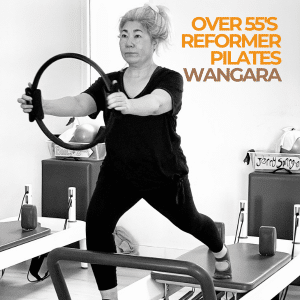Aged care refers to diverse services catering to older individuals’ unique needs, from personal assistance and health services to residential care in senior communities. These services strive to enhance the quality of life, foster independence, and create a safe, nurturing environment.
Identifying the right time for transitioning to aged care often involves assessing an individual’s physical health, mental health, and daily living needs. If your loved one struggles with tasks like cooking, cleaning, and personal hygiene or has growing health needs requiring professional care, it may be time to consider aged care. Similarly, changes in mental health, like frequent confusion or the onset of dementia, also indicate that extra support might be necessary.
With a sensitive and knowledgeable approach, transitioning to aged care can be a positive step toward ensuring the well-being and comfort of older individuals. The following sections will explore this complex process, providing detailed advice for each stage of the transition.
- Research And Choosing The Right Aged Care Facility
Several factors merit attention when selecting an aged care service. If home care is a consideration, the proficiency, reliability, and demeanour of in-home care professionals are vital, as these individuals will be assisting your loved one regularly.
For those considering residential care, factors such as the staff’s competence and facility amenities are crucial. Additionally, the facility’s location and feedback from current or past residents can provide valuable insights. The services offered, from personal care to specialized health services, should align with the individual’s needs.
Regardless of the type of care considered, involving your loved one in the decision-making process is essential. Their comfort and acceptance of the care provided are paramount, so their preferences and concerns should guide the decision.
- Preparing For The Transition
Shifting to aged care necessitates thorough preparation. This process engages both emotional and practical dimensions, with the ultimate goal of facilitating a smooth transition.
- Emotional Preparation
It is natural for your loved one to experience a range of emotions, such as apprehension, sadness, or even relief. Encourage open discussions about these feelings and provide reassurances where needed. Also, understanding and setting realistic expectations about what aged care entails can significantly help in this emotional preparation.
- Practical Preparation
Practical preparation involves organizing various aspects of your loved one’s life to accommodate the new care arrangements.
For those opting for in-home care, alterations may be needed within the house to guarantee safety and accessibility. For instance, installing grab bars in the bathroom, securing rugs to prevent tripping, or rearranging furniture to allow for easy navigation could be part of this process. It might also mean setting aside a room or area where the caregiver can assist with personal care or physical therapy.
In the case of transitioning to a residential facility, downsizing becomes an important task. Personal belongings carry memories and a sense of identity, so deciding what to take along is more than a mere practical consideration. A favourite armchair, cherished photographs, a beloved collection of books—these touches of home can make a new environment feel familiar and comforting.
There’s also the need for careful management of finances, medical records, and legal affairs. Practical arrangements might include setting up direct debits for care services and providing the care provider with a list of current medications and health history. Additionally, consulting a legal professional to update wills, power of attorney documents, and advance care directives is crucial.
- The Process Of Moving In
The process of moving into aged care, whether into a residential facility or by initiating in-home care services, requires careful planning and coordination.
- Finalizing Logistics
Before the move, finalizing all necessary paperwork is essential. This includes contracts with the care provider, medical documents, and necessary financial arrangements.
For residential care, coordinating the move-in date with the facility and planning the physical move becomes a crucial task. This may involve hiring movers, packing personal belongings, and arranging transportation. For in-home care, this might entail scheduling the first visit of the care professional and ensuring that any necessary home modifications have been completed.
- The First Day
The first day marks a significant change, so it is important to ensure it is as smooth and stress-free as possible.
In a residential facility, this could involve introducing your loved one to the staff and other residents, familiarizing them with the premises, and perhaps sharing a meal together. In the context of in-home care, it’s about ensuring the caregiver is introduced properly, and your loved one feels comfortable with this new person in their home.
- Settling Into Aged Care
Settling into aged care is an ongoing process that may take days, weeks, or even months. Your loved one and family will need time to adjust to the new arrangements. It’s normal to experience a period of uncertainty, initial resistance, or homesickness, particularly with residential care. Patience, understanding, and open communication can greatly assist during this time.
Regularly checking in with your loved one allows you to assess how well they’re adjusting to the new environment or services. Ask about their comfort, interactions with the caregiver or staff, and overall satisfaction with the care they’re receiving.
In a residential setting, this could mean regular visits, participation in family activities at the facility, or even volunteering if possible. For in-home care, it can involve spending time with your loved one and the caregiver to understand the routine and ensure the care is personalized and respectful.

Conclusion
Transitioning to aged care is a significant life phase, often accompanied by feelings of uncertainty, but it also ushers in a new chapter filled with comfort and enhanced quality of life. Each person’s experience will be unique, shaped by their preferences, needs, and resilience. Involving your loved one at each step, honouring their choices, and providing emotional support can transform this transition from simply being smooth to becoming an empowering journey.














